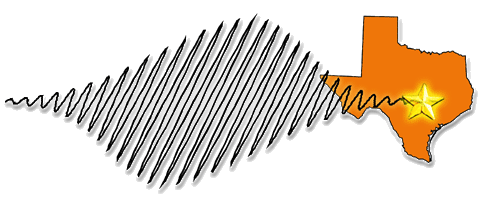 CHEDS performs research on a variety of plasma acceleration mechanisms. The Texas Petawatt Laser has been used to drive high amplitude waves in underdone plasma and these waves have been harnessed to accelerate electrons to energies of a few GeV (see figures below.) This class of research involves focusing the TPW pulses into a gas where the intense ponderomotive forces of the focused light pulse produce a traveling plasma wave. The longitudinal electric fields accompanying this nonlinear plasma wave can then accelerate electrons if they are injected at a phase that allows them to surf along with the relativistic phase velocity of the plasma wave.
CHEDS performs research on a variety of plasma acceleration mechanisms. The Texas Petawatt Laser has been used to drive high amplitude waves in underdone plasma and these waves have been harnessed to accelerate electrons to energies of a few GeV (see figures below.) This class of research involves focusing the TPW pulses into a gas where the intense ponderomotive forces of the focused light pulse produce a traveling plasma wave. The longitudinal electric fields accompanying this nonlinear plasma wave can then accelerate electrons if they are injected at a phase that allows them to surf along with the relativistic phase velocity of the plasma wave.
In addition, CHEDS scientists have explored ion acceleration from solid targets for a number of applications. In these experiments the intense laser pulse is focused tightly onto a solid target, where hot electrons are generated. These electrons set up space charge fields on the backside of the target which can accelerate protons adhered to this target up energy approaching 100 MeV. CHEDS has utilized these intense bursts of MeV protons to heat second targets of solid density to high temperature and probe that dense plasma’s equation of state. The laser driven protons have also been used to generate high flux bursts of neutrons by inducing nuclear reactions in a second target (see figure at bottom.)




